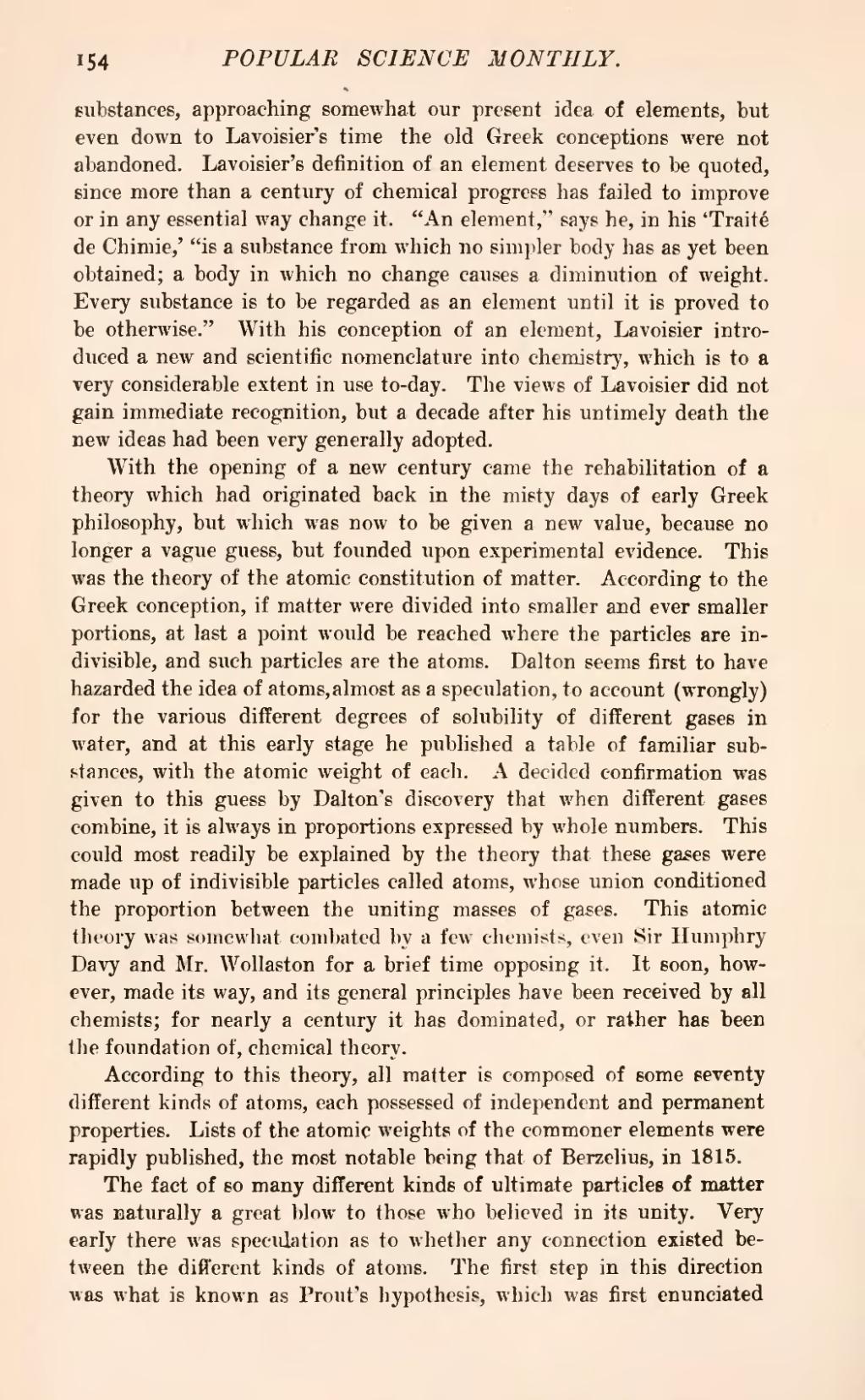substances, approaching somewhat our present idea of elements, but even down to Lavoisier's time the old Greek conceptions were not abandoned. Lavoisier's definition of an element deserves to be quoted, since more than a century of chemical progress has failed to improve or in any essential way change it. "An element," says he, in his 'Traité de Chimie,' "is a substance from which no simpler body has as yet been obtained; a body in which no change causes a diminution of weight. Every substance is to be regarded as an element until it is proved to be otherwise." With his conception of an element, Lavoisier introduced a new and scientific nomenclature into chemistry, which is to a very considerable extent in use to-day. The views of Lavoisier did not gain immediate recognition, but a decade after his untimely death the new ideas had been very generally adopted.
With the opening of a new century came the rehabilitation of a theory which had originated back in the misty days of early Greek philosophy, but which was now to be given a new value, because no longer a vague guess, but founded upon experimental evidence. This was the theory of the atomic constitution of matter. According to the Greek conception, if matter were divided into smaller and ever smaller portions, at last a point would be reached where the particles are indivisible, and such particles are the atoms. Dalton seems first to have hazarded the idea of atoms, almost as a speculation, to account (wrongly) for the various different degrees of solubility of different gases in water, and at this early stage he published a table of familiar substances, with the atomic weight of each. A decided confirmation was given to this guess by Dalton's discovery that when different gases combine, it is always in proportions expressed by whole numbers. This could most readily be explained by the theory that these gases were made up of indivisible particles called atoms, whose union conditioned the proportion between the uniting masses of gases. This atomic theory was somewhat combated by a few chemists, even Sir Humphry Davy and Mr. Wollaston for a brief time opposing it. It soon, however, made its way, and its general principles have been received by all chemists; for nearly a century it has dominated, or rather has been the foundation of, chemical theory.
According to this theory, all matter is composed of some seventy different kinds of atoms, each possessed of independent and permanent properties. Lists of the atomic weights of the commoner elements were rapidly published, the most notable being that of Berzelius, in 1815.
The fact of so many different kinds of ultimate particles of matter was naturally a great blow to those who believed in its unity. Very early there was speculation as to whether any connection existed between the different kinds of atoms. The first step in this direction was what is known as Front's hypothesis, which was first enunciated
